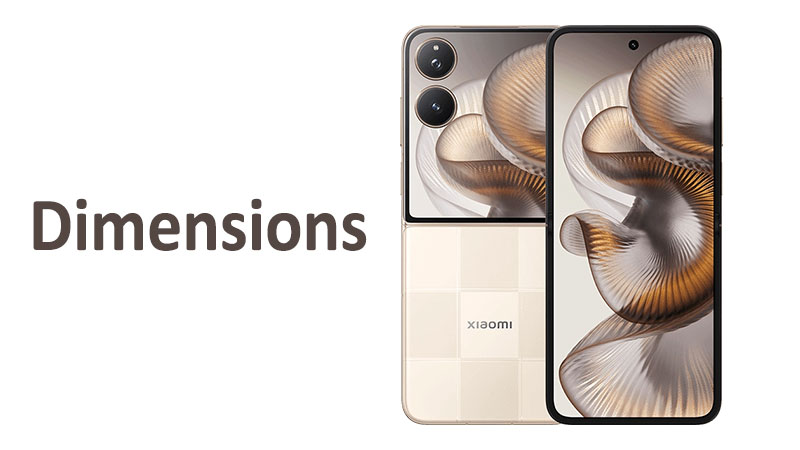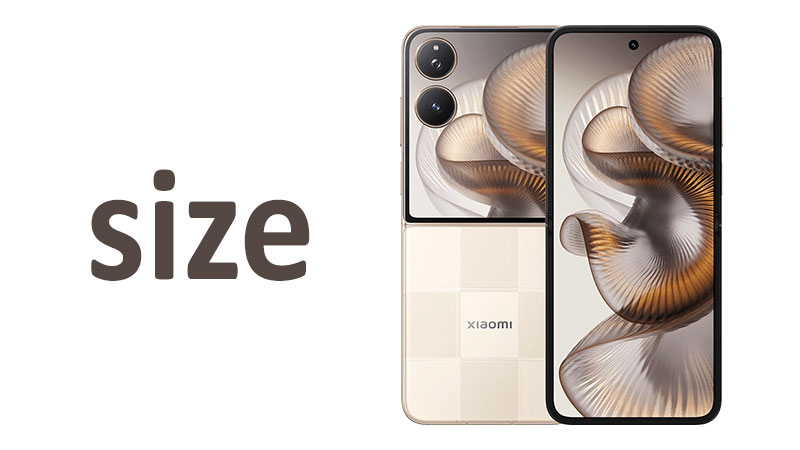The Apple iPhone 15 size is a primary specification consumers evaluate before making a purchase decision. Its exact dimensions and screen size dictate the user experience, comfort, and overall portability. This comprehensive article explores the exact screen measurements and physical dimensions of the standard iPhone 15 model. We analyze how the iPhone 15 size compares against previous generations. Furthermore, we examine its position against rival compact flagship phones in the market. Choosing the correct phone size significantly impacts daily convenience and long-term usability. We provide detailed specifications and thorough analysis to help you make an informed purchasing decision. Understanding the physical form factor is crucial before you upgrade your current device.
Analyzing the Physical Dimensions of the iPhone 15
The iPhone 15 boasts a form factor that is remarkably similar to its direct predecessor. However, subtle refinements to the chassis construction have occurred. These small changes collectively enhance the in-hand feel of the device. The official dimensions reveal the exact physical footprint of the standard model.
Detailed Measurement Breakdown
The specific measurements for the base iPhone 15 model are precisely documented. The phone measures 147.6 mm (5.81 inches) in height. Its width is measured at 71.6 mm (2.82 inches). The device maintains a notably slim profile, featuring a depth of 7.8 mm (0.31 inches). These numbers confirm its status as a leading compact flagship phone.
The height of 147.6 mm ensures the device remains manageable in most hands. Users can comfortably reach most parts of the screen without repositioning their grip. This is a significant advantage for one-handed operation. The width of 71.6 mm is particularly important for grip comfort. A narrow phone is generally easier to hold securely. This width measurement places the iPhone 15 firmly in the comfortable zone for millions of users worldwide.
The depth measurement of 7.8 mm demonstrates Apple’s commitment to sleek design. This thin profile aids pocketability and minimizes bulk. Despite this slimness, the phone maintains a robust structure. The subtle increase in thickness over some older models accommodates enhanced internal components. These components include a larger battery and an improved camera system.
Specialized Comparison with iPhone 14 Dimensions
Comparing the iPhone 15 size to the iPhone 14 is a necessary step for potential upgraders. The iPhone 14 measured 146.7 mm in height and 71.5 mm in width. The depth was also 7.8 mm. This reveals that the iPhone 15 is only 0.9 mm taller and 0.1 mm wider than the previous generation. These dimensional changes are negligible in terms of user perception. They are not visible to the naked eye.
However, even these small dimensional changes carry important implications. For instance, most iPhone 14 cases are not perfectly compatible with the iPhone 15. The new phone features slightly more contoured edges and a redesigned camera bump structure. Therefore, potential buyers must plan to purchase new cases and protective accessories. The nearly identical physical size, though, maintains the familiar feel users expect.
Pros and Cons of the Physical Dimensions
The physical dimensions of the iPhone 15 offer several clear benefits. Its Pros include excellent one-handed usability and superior portability. The compact size fits easily into smaller pockets and bags. It offers a secure and comfortable grip for extended periods of use. This is ideal for navigating public transit or quickly checking notifications.
Conversely, the physical size presents minor Cons. Some users may find the screen area slightly restrictive for intensive media editing or viewing. The overall chassis size limits the battery capacity compared to the larger Plus and Pro Max models. This means users prioritizing maximum battery life might look elsewhere. Furthermore, the compact design dictates that the camera module requires careful engineering to maintain image quality.
The 6.1-inch Super Retina XDR Display
The display is arguably the most crucial component of any modern smartphone. The iPhone 15 features a 6.1-inch Super Retina XDR OLED display. This screen size maintains the widely popular standard set by several previous iPhone generations. It achieves an optimal balance between viewing immersion and practical ergonomics.
Screen Area and Resolution Deep Dive
The diagonal screen measurement is 6.1 inches. This corresponds to an approximate screen area of 91.3 cm². This measurement provides a tangible sense of the available screen real estate. The iPhone 15 achieves an impressive screen-to-body ratio of approximately 86.4%. This high ratio signifies that the surrounding bezels are very thin. Thin bezels maximize the effective viewing area within the compact chassis.
The display resolution is 2556 x 1179 pixels. This delivers a sharp pixel density of about 460 pixels per inch (ppi). The resulting image quality is crisp, vibrant, and highly detailed. The Super Retina XDR technology ensures exceptional color accuracy and contrast. This technology is vital for enjoying high-dynamic-range (HDR) content.
The Impact of Dynamic Island on Screen Real Estate
A significant display improvement comes from the implementation of the Dynamic Island. This feature replaces the older notch design previously seen on non-Pro models. The notch occupied a fixed area at the top of the screen. The Dynamic Island uses a pill-shaped cutout that dynamically shifts and expands to show alerts and ongoing background activity.
The Dynamic Island improves the usable screen area compared to the notch. It provides a more modern and integrated software experience. Functionally, it allows the screen to feel larger and more unified. This enhances visual immersion when watching videos or playing mobile games. It efficiently repurposes the camera and sensor area into a functional software element.
Specialized Display Technology and Brightness
The iPhone 15 display introduces significant brightness enhancements. It offers up to 1000 nits of typical maximum brightness. The screen can achieve a peak HDR brightness of 1600 nits. Furthermore, the peak outdoor brightness reaches an impressive 2000 nits. This makes the iPhone 15 screen significantly easier to read under direct sunlight.
The display is protected by Apple’s Ceramic Shield front cover. Ceramic Shield utilizes nanoceramic crystals for superior durability. This protective layer makes the screen tougher and more resistant to scratches and shattering. The combination of high brightness, high resolution, and robust protection ensures a premium display experience.
Pros and Cons of the 6.1-inch Display
The Pros of the 6.1-inch screen are numerous. The size is comfortable for viewing, typing, and navigating. The Dynamic Island offers a sleek, modern visual upgrade. The dramatically increased outdoor brightness improves visibility in all conditions. This Super Retina XDR panel delivers world-class color fidelity and clarity.
The primary Con is the fixed 60Hz refresh rate. Unlike the Pro models and many competitor flagship phones, the iPhone 15 lacks ProMotion technology. ProMotion enables adaptive refresh rates up to 120Hz. The 60Hz rate means that scrolling and animations are less fluid compared to 120Hz displays. However, this limitation is often unnoticeable for general, everyday usage.
Specialized Size Comparisons Across the Lineup and Competitors
Understanding the iPhone 15 size requires comparison to other devices. We must look at both Apple’s own lineup and key competitors in the smartphone market. This comparison helps define the iPhone 15’s position in the broader landscape of available compact phones.
iPhone 15 vs. iPhone 15 Pro Size
The iPhone 15 and the iPhone 15 Pro share the same 6.1-inch display size. However, their physical dimensions differ slightly due to material choice. The iPhone 15 Pro is slightly smaller in physical height and width. This is a result of thinner display bezels on the Pro model.
The iPhone 15 Pro utilizes a titanium frame. The iPhone 15 uses an aluminum frame. Titanium is both stronger and lighter than stainless steel used in previous Pro generations. This results in the iPhone 15 Pro being slightly lighter than its predecessors. The iPhone 15, while having an aluminum chassis, also remains lightweight. The dimensional differences are minimal, but the material feel in hand is distinct. The standard iPhone 15 is slightly softer and warmer to the touch due to its contoured aluminum edges.
iPhone 15 vs. Larger Models: Plus and Pro Max
The iPhone 15 lineup includes significantly larger devices: the iPhone 15 Plus and the iPhone 15 Pro Max. Both of these models feature a larger 6.7-inch display. This is the largest screen size Apple offers. The size difference is the most substantial factor separating the standard iPhone 15 from the larger variants.
The 6.7-inch models cater to users who prioritize media consumption and battery life. Their increased dimensions accommodate larger internal batteries. They also provide a much more expansive canvas for multitasking and productivity. In contrast, the 6.1-inch iPhone 15 size targets users who prioritize maximum comfort and easy portability. This size is the practical choice for most consumers.
iPhone 15 vs. Samsung Galaxy S24
Comparing the iPhone 15 against the Samsung Galaxy S24 provides context within the compact flagship phone segment. The Galaxy S24 is a primary competitor to the base iPhone 15 model. The Samsung Galaxy S24 measures 147.0 x 70.6 x 7.6 mm. The S24 is negligibly shorter, narrower, and thinner than the iPhone 15.
The Galaxy S24, despite its slightly smaller body, manages to fit a larger 6.2-inch display. This highlights Samsung’s ability to achieve an even higher screen-to-body ratio. The S24 also features a variable 1-120Hz refresh rate display. This gives Samsung an advantage in display fluidity. However, the iPhone 15 offers a higher resolution (2556 x 1179 pixels) compared to the S24’s 2340 x 1080 pixels. Both phones represent the pinnacle of comfortable, compact design.
The choice often boils down to ecosystem preference, not physical size. The iPhone 15 is an incredibly well-balanced device. Its dimensions are optimized for the Apple ecosystem user base. The physical size provides an excellent blend of screen space and pocketability.
Buyer’s Guide: Usability, Ergonomics, and Portability
For a potential buyer, the physical size and shape of the iPhone 15 translate directly into daily user experience. Ergonomics are paramount for devices we interact with hundreds of times each day. The dimensions of the iPhone 15 have been carefully calibrated for widespread appeal and functionality.
One-Handed Use and Grip Comfort
The 71.6 mm width makes the iPhone 15 an excellent choice for one-handed operation. This width allows most average-sized adult hands to comfortably wrap around the phone. Users can easily reach the volume buttons and the power button. Moreover, reaching across the screen for common functions, such as pulling down the notification center, is straightforward.
Apple introduced slightly rounded or contoured edges on the aluminum frame. This design change greatly enhances grip comfort. Previous square-edged designs could feel sharp or dig into the palm during long usage sessions. The rounded edges of the iPhone 15 make the phone feel softer and more ergonomic in hand. This subtle design alteration significantly improves the physical interaction experience.
Portability and Pocketability
The iPhone 15 dimensions make it highly portable. The compact size ensures it slips easily into a jacket pocket or a pair of jeans. At 7.8 mm deep, the phone does not create an uncomfortable bulge. This superior pocketability is a key selling point for users who dislike large, cumbersome smartphones.
Commuters and active individuals especially benefit from this size. The phone is easily accessible and requires minimal space in a bag or purse. This balance of a large screen (6.1 inches) within a small footprint (147.6 x 71.6 mm) defines its success. It avoids the trade-offs associated with larger, heavier devices like the Pro Max.
Case Compatibility Considerations
As mentioned previously, the minor dimensional shifts necessitate new accessories. When purchasing an iPhone 15, buyers must invest in cases specifically designed for this model. Cases designed for the iPhone 14 will not fit due to the rounded edges and the different camera alignment. Third-party accessory manufacturers quickly adapted to this change. Buyers now have a wide array of protective options available.
However, the consistent size profile ensures a robust aftermarket for screens and repairs. The standardized 6.1-inch form factor simplifies manufacturing processes. It also benefits the repair ecosystem, making parts widely available. Buyers should always confirm that any accessory is explicitly labeled for the iPhone 15. This simple check prevents potential fitment issues.
The Evolution of the Standard iPhone Size
Apple’s dedication to the 6.1-inch form factor is not accidental. It represents years of market research and consumer feedback. The standard iPhone model has largely maintained this screen size since the iPhone 12. Understanding this historical context reveals why the iPhone 15 size is so important.
Setting the Gold Standard
The 6.1-inch display size began with the iPhone 12. It quickly established itself as the company’s best-selling form factor. It perfectly replaced the smaller 5.8-inch display of the iPhone X and 11 Pro. It provided a significant boost in viewing area without sacrificing too much comfort.
Apple continued this trend with the iPhone 13 and iPhone 14, each featuring a 6.1-inch screen. By maintaining this consistent size, Apple offers familiarity to long-time users. It ensures that the transition between generations is seamless and predictable. The iPhone 15 size continues this successful lineage. It proves the enduring appeal of the middle-ground option.
Catering to the Compact Flagship Phone Demand
In a market increasingly dominated by massive phablets, the iPhone 15 serves a crucial niche. Many consumers actively seek a powerful phone that is not overly large. The iPhone 15 perfectly fits the definition of a compact flagship phone. It packs high-end performance and a professional-grade camera into a highly manageable package.
The popularity of this size demonstrates a consumer desire for usability over sheer size. Not every user wants a phone that requires two hands for every task. The 6.1-inch display provides enough canvas for modern apps and media. At the same time, it respects the user’s need for pocket space and comfort. This strategic sizing ensures the iPhone 15 captures the largest segment of the general smartphone market.
Important Points for Buyers and Readers
When considering the iPhone 15 size, several technical details must inform a buying decision. These points relate to functionality and long-term usability. A thorough understanding of these factors ensures buyer satisfaction.
Display Technology vs. Refresh Rate
The iPhone 15 offers a best-in-class Super Retina XDR display technology. The color accuracy and peak brightness are outstanding. However, it still uses a 60Hz fixed refresh rate. Buyers coming from a high-refresh-rate Android phone might notice the difference in scrolling smoothness.
Users upgrading from an older iPhone (iPhone 11 or earlier) will find the screen a massive upgrade. The shift from LCD to OLED technology is significant. It provides perfect blacks and infinite contrast. The lack of ProMotion is a technical trade-off. It keeps the standard model more affordable while preserving the premium 120Hz feature for the Pro models.
Weight Distribution and Materials
The iPhone 15 features an aluminum frame and a color-infused glass back. The device achieves an optimized weight distribution. This prevents the phone from feeling top-heavy or imbalanced. The matte finish on the back glass improves grip compared to the glossy finish of earlier models.
This combination of materials ensures durability without excessive weight. The phone feels solid and premium without becoming burdensome. This balance in weight and material is a key element of the overall size perception. A slightly lighter phone often feels more compact than its dimensions suggest.
Dynamic Island’s Long-Term Usability
The introduction of Dynamic Island fundamentally changes the interaction with the screen. It is more than a visual novelty. It is a highly functional software feature that uses the screen area efficiently. It allows users to quickly manage music playback, view call status, or check timers without interrupting their current application. This feature enhances the usefulness of the 6.1-inch screen. It provides a multitasking layer that maximizes the available space.
The Dynamic Island further differentiates the iPhone 15 size from older iPhone models. It eliminates the aesthetic drawback of the notch. This change contributes to a more modern and expansive viewing experience overall.
Conclusion: Finding the Perfect Balance
The Apple iPhone 15 size represents the industry’s sweet spot. It offers an optimal balance between screen immersion and physical comfort. The physical dimensions are 147.6 x 71.6 x 7.8 mm. This makes it a highly manageable and portable device.
Its 6.1-inch Super Retina XDR display provides a large, vibrant, and incredibly bright viewing area. The introduction of the Dynamic Island maximizes the effective screen-to-body ratio. This crucial update delivers a modern feel without increasing the phone’s physical footprint. The dimensions are nearly identical to the iPhone 14. This familiar size, however, houses significant technological improvements.
The iPhone 15 is the ideal choice for most users. It appeals to those who need a powerful flagship phone that they can comfortably operate with one hand. It is the definitive compact powerhouse in the Apple ecosystem. Buyers prioritizing maximum portability and convenience should confidently choose the standard iPhone 15 size. This device successfully blends high-end performance with premium, accessible ergonomics.
Frequently Asked Questions (FAQ)
Is the iPhone 15 size the same as the iPhone 14? No, the iPhone 15 is negligibly taller and wider than the iPhone 14. Its dimensions are 147.6 x 71.6 mm compared to 146.7 x 71.5 mm.
Does the iPhone 15 have a bigger screen than the Pro model? No, the standard iPhone 15 and the iPhone 15 Pro both feature the same 6.1-inch display size diagonally. The Pro model has slightly smaller physical bezels.
Will my iPhone 14 case fit the new iPhone 15? Generally, iPhone 14 cases will not fit the iPhone 15 perfectly. The new model has slightly different curves and camera bump dimensions.
What is the screen-to-body ratio of the iPhone 15? The iPhone 15 boasts an excellent screen-to-body ratio of approximately 86.4%. This is due to its thin display bezels and the removal of the traditional notch.
How does the iPhone 15 size compare to the iPhone 15 Pro Max? The iPhone 15 is significantly smaller than the iPhone 15 Pro Max. The standard model has a 6.1-inch display, while the Pro Max features a much larger 6.7-inch display.



